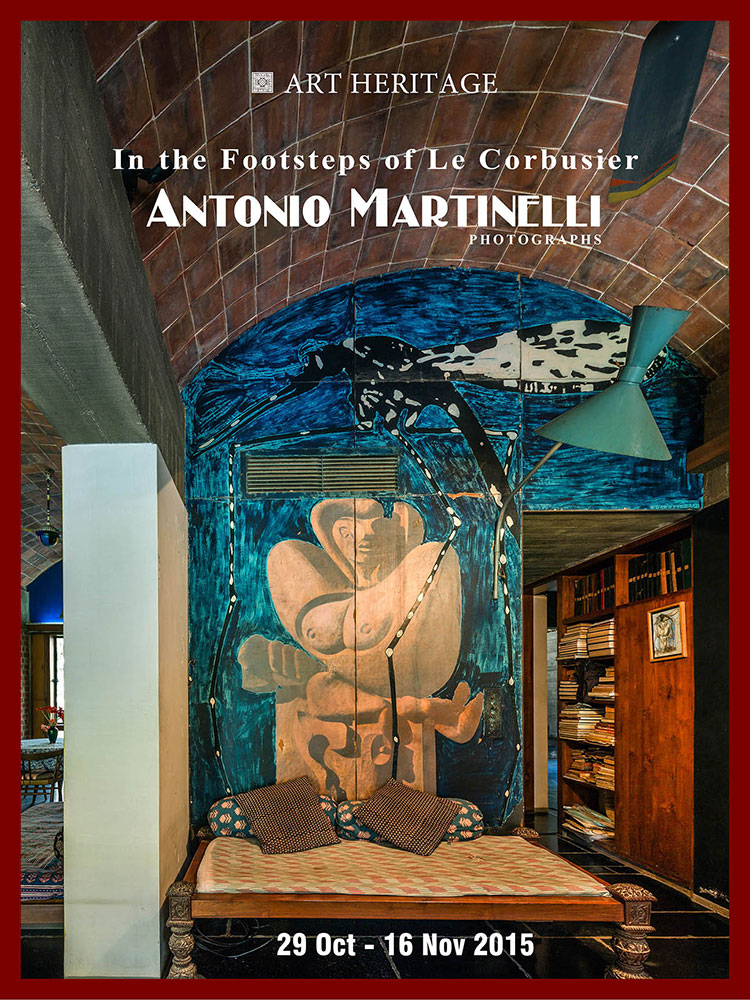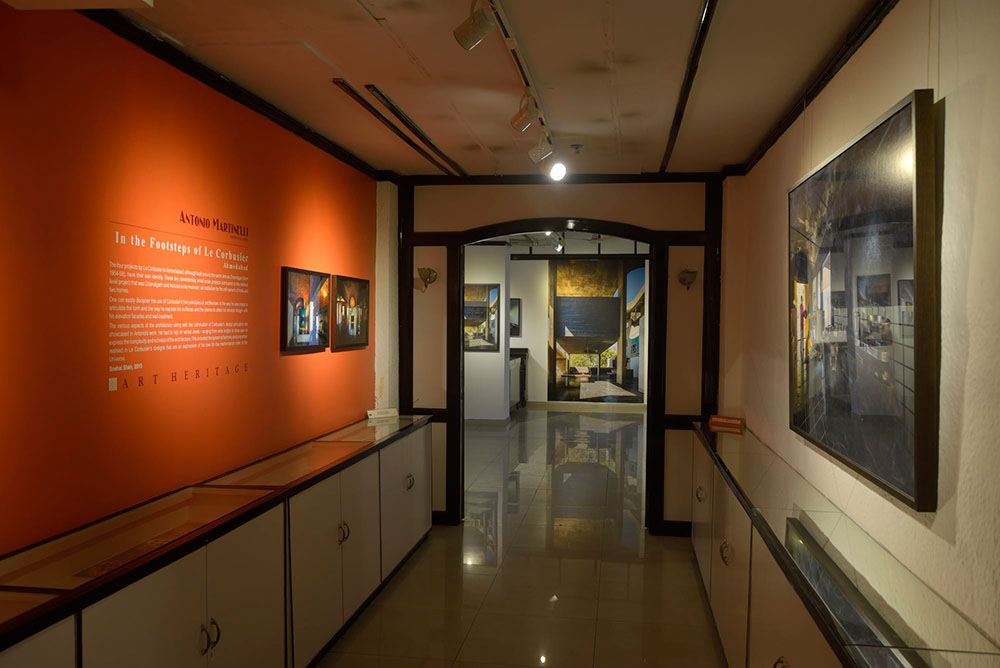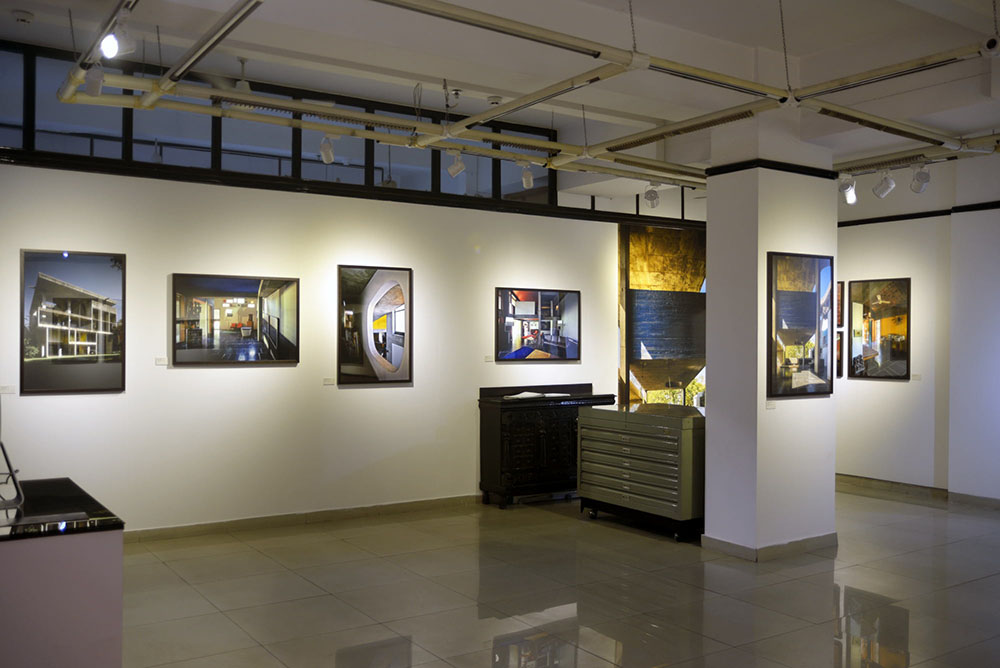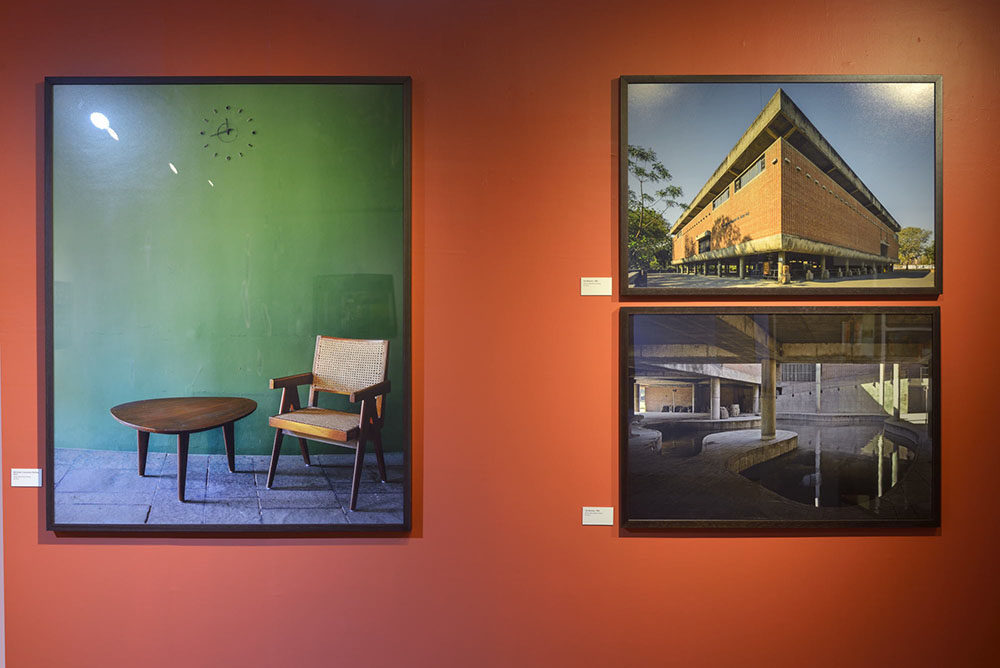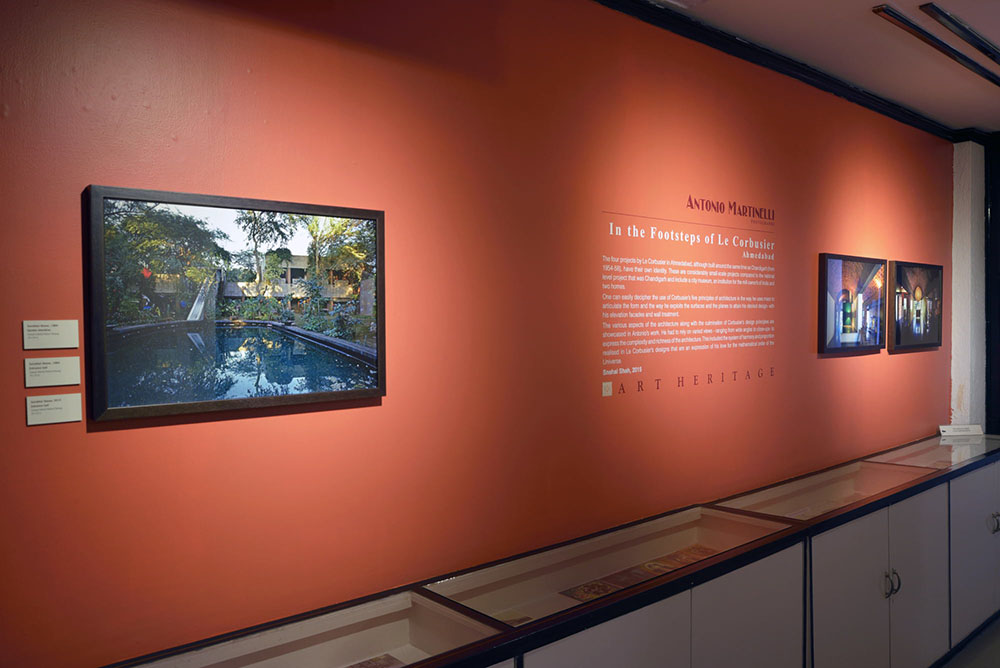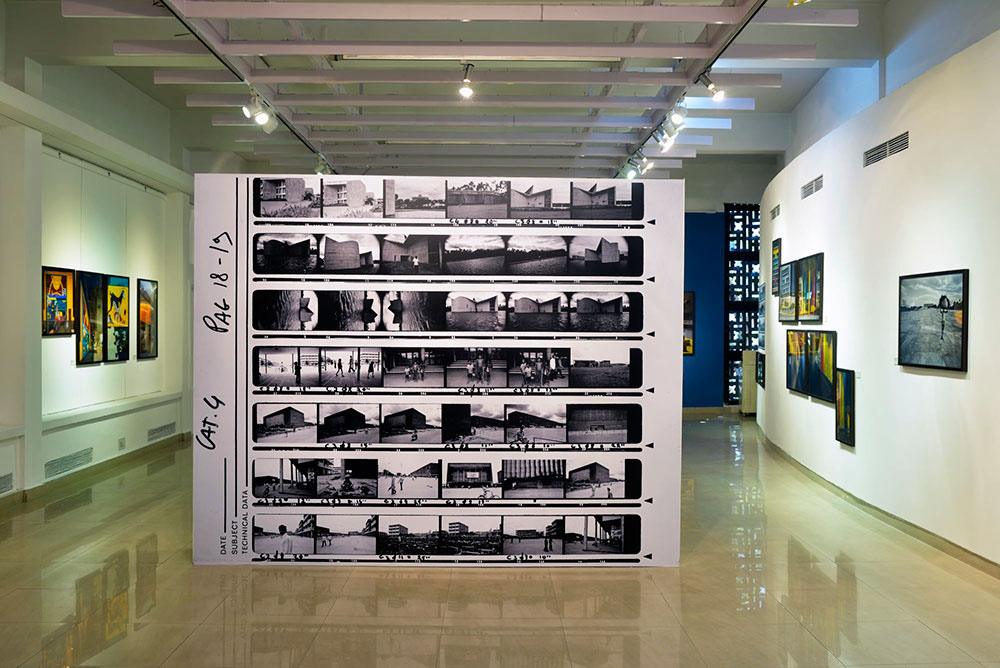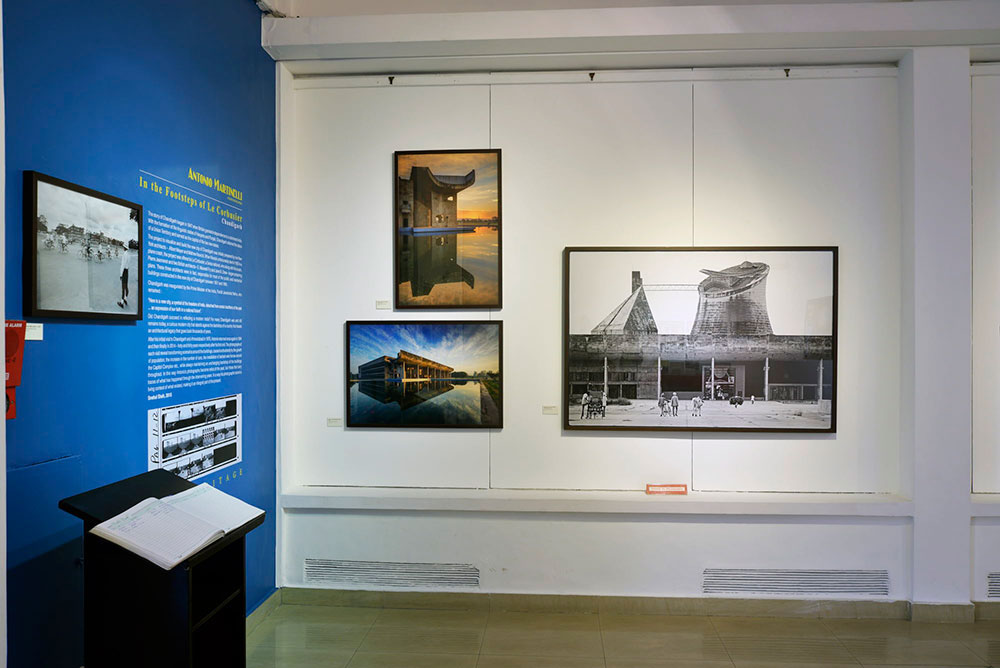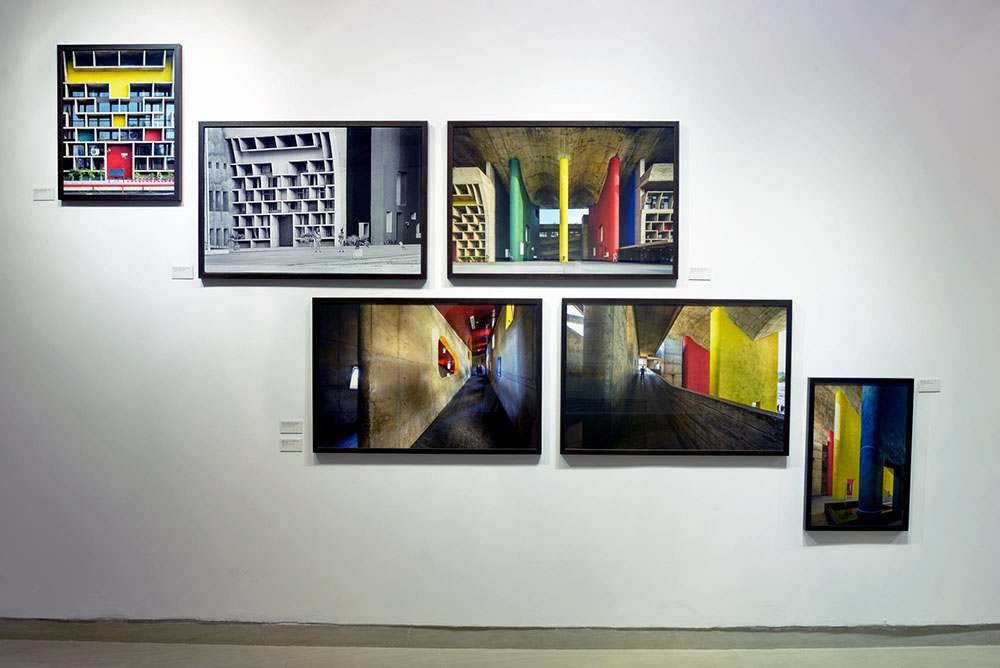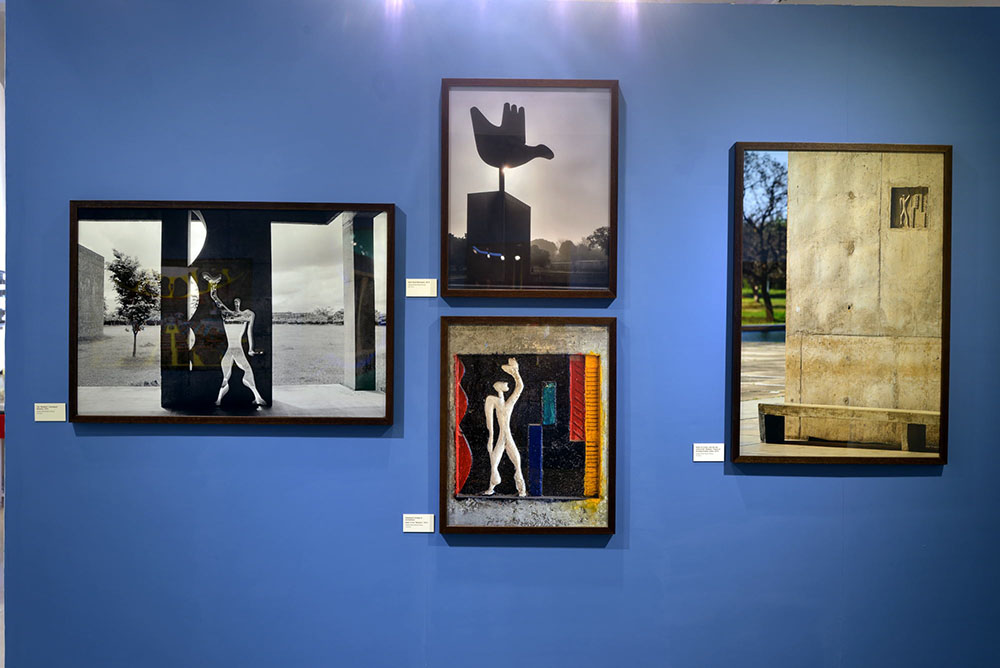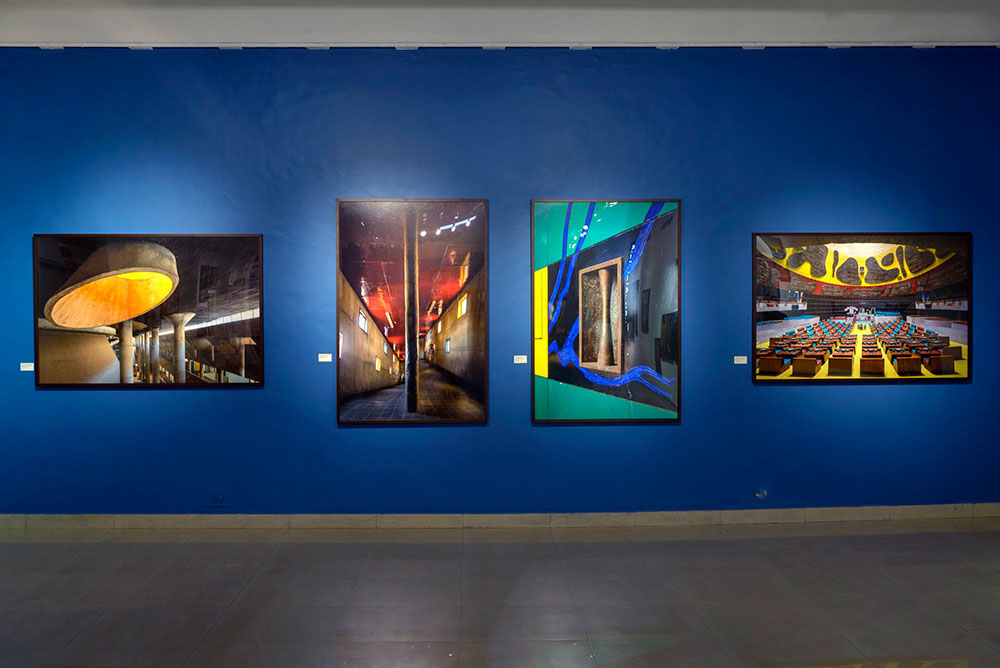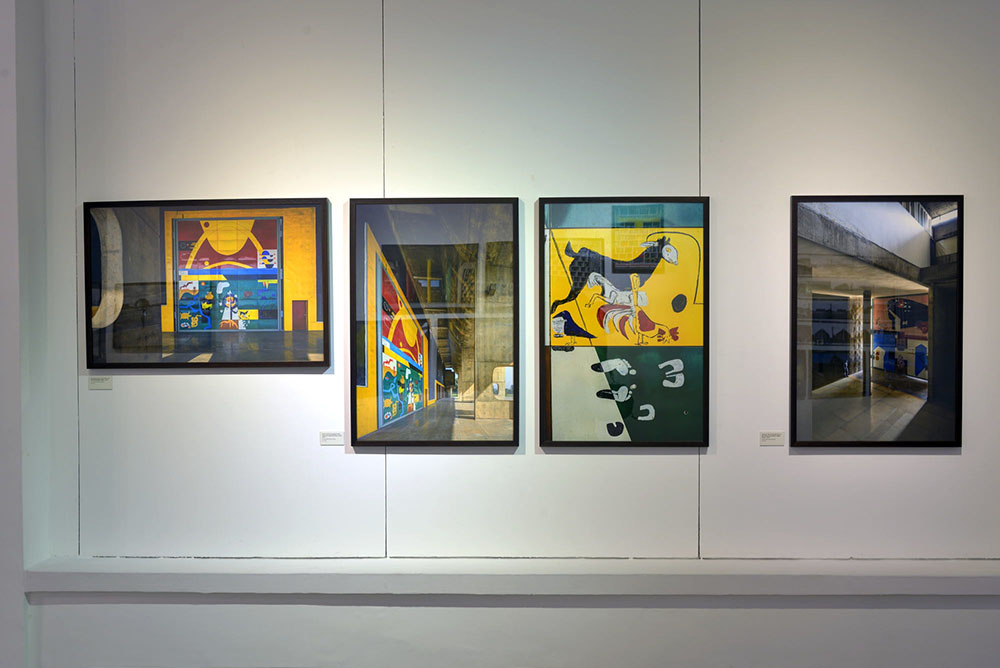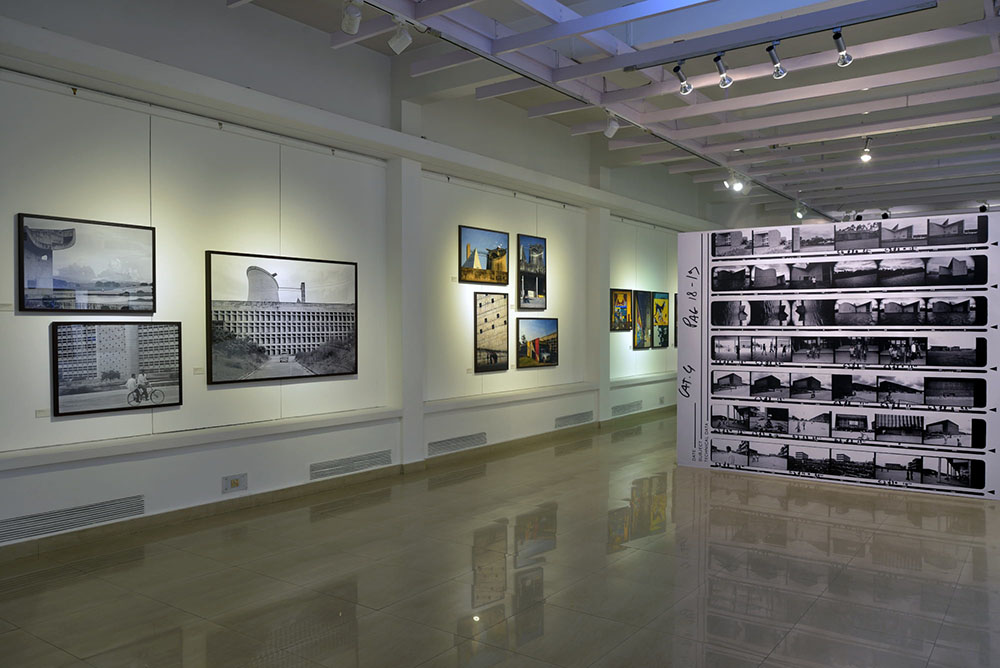PAST EXHIBITION
In The Footsteps of Le Corbusier
Ahmedabad
The four projects by Le Corbusier in Ahmedabad, although built around the same time as Chandigarh (from 1954-58), have their own identity. These are considerably small-scale projects compared to the national level project that was Chandigarh and include a city museum, an institution for the mill owner’s of India and two homes. One can easily decipher the use of Corbusier’s five principles of architecture in the way he uses mass to articulate the form and the way he exploits the surfaces and the planes to attain his desired design- with his elevation facades and wall treatment. The various aspects of the architecture along with the culmination of Corbusier’s design principles are showcased in Antonio’s work. He had to rely on varied views – ranging from wide angles to close-ups- to express the complexity and richness of the architecture. This included the system of harmony and proportion realised in Le Corbusier’s designs that are an expression of his love for the mathematical order of the Universe.
Chandigarh
The story of Chandigarh began in 1947 when Britain granted independence to a colonized India. With the formation of the linguistic states of Haryana and Punjab, Chandigarh attained the status of a Union Territory and served as the capital of the two new states. The project to visualize and build the new city of Chandigarh was initially prepared by two New York architects— Albert Mayer and Mathew Novicki. When Novicki unfortunately died in 1950 in a plane crash, the project was offered to Le Corbusier, a Swiss national, who along with his cousin, Pierre Jeanneret and two British architects– E. Maxwell Fry and Jane B. Drew– began preparing plans. These three architects were in fact, responsible for most of the public and residential buildings constructed in the new city of Chandigarh between 1951 and 1965. Chandigarh was inaugurated by the Prime Minister of the India, Pandit Jawaharlal Nehru, who remarked : “Here is a new city, a symbol of the freedom of India, detached from certain traditions of the past … an expression of our faith in a national future”. Did Chandigarh succeed in reflecting a modern India? For many Chandigarh was and still remains today, a curious modern city that stands against the backdrop of a country that boasts an architectural legacy that goes back thousands of years. After his initial visit to Chandigarh and Ahmedabad in 1975, Antonio returned once again in 1984 and then finally in 2014 – forty and thirty years respectively after his first visit. The photographs of each visit reveal transforming scenarios around the buildings, caused undoubtedly by the growth of population, the increase in the number of cars, the installation of barbed wire fences around the Capitol Complex etc., while always maintaining an unchanging backdrop of the buildings throughout. In this way Antonio’s photographs become relics of the past, but those that carry traces of what has happened through the intervening years. In a way his photographs record a living context of what existed, making it an integral part of the present.
Snehal Shah, 2015
Date
29 Oct - 17 Nov 2015
Artists
Antonio Martinelli
Medium
Photography
